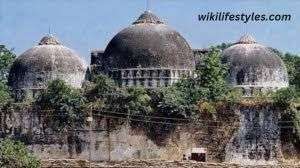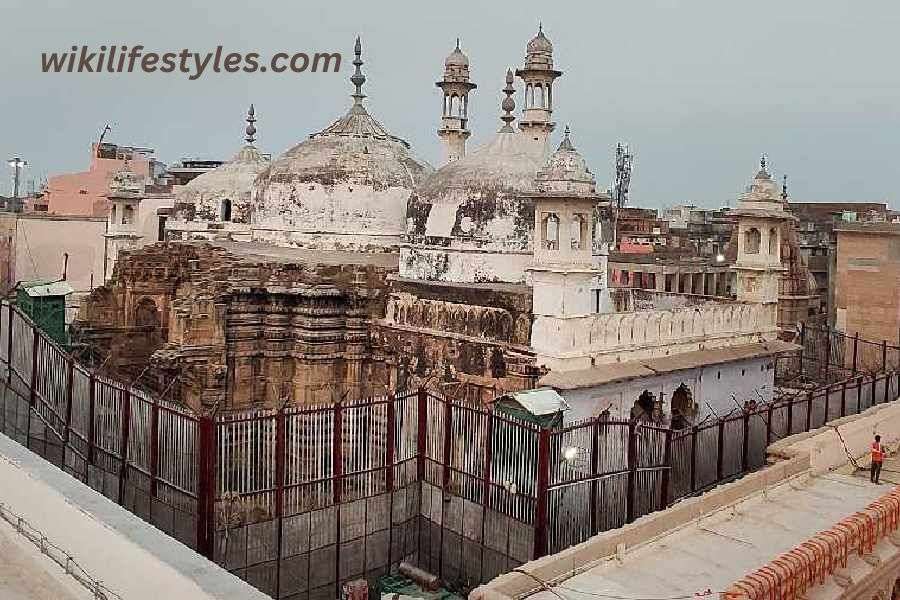Introduction: Gyanvapi Mosque Case
Join us on Wikilifestyles.com as we navigate through the layers of Gyanvapi Verdict, showcasing India’s rich cultural and religious heritage. The ASI report adds a new chapter to this historical saga, solidifying Gyanvapi Mosque as a symbol of ongoing dialogue between history, faith, and the relentless pursuit of truth. Embark on this profound historical odyssey with Wikilifestyles.com, where stories come to life, and the past is unveiled in all its multifaceted glory
The Gyanvapi Mosque, nestled in the ancient city of Varanasi, India, stands as a testament to the intricate interplay of history, religion, and legal battles. Constructed in 1669 by Aurangzeb on the remnants of an older Shiva temple, its journey is marked by debates, claims, and a recent Archaeological Survey of India (ASI) report that adds another layer to its enigmatic history.
Gyanvapi Masjid History: Tracing the Vishweshwar Temple
The roots of the Gyanvapi Mosque delve into the late 16th century when Todar Mal, a prominent courtier of Akbar, joined hands with the pre-eminent Brahmin scholar Narayana Bhatta to build the Vishweshwar temple. This temple played a crucial role in establishing Banaras as a Brahminic center, attracting scholars from across the subcontinent.
Architectural historian Madhuri Desai’s hypothesis suggests a unique design for the temple, featuring intersecting iwans borrowed from Mughal architecture, adorned with pointed arches and a carved stone exterior. This pre-mosque history forms the foundation for the complex narratives that follow.

Gyanvapi News: Debates and Tensions
The history preceding the Vishweshwar temple is shrouded in debates among scholars and tensions between the local Hindu and Muslim populations. Desai notes the multiple narratives surrounding the original temple, emphasizing how these debates have shaped the sacred topography of Varanasi.
Claims of the original temple’s repeated destruction and reconstruction add layers to the complexity. Fringe theories, including Maulana Abdus Salam Nomani’s assertion that the mosque predates Aurangzeb’s reign, challenge the mainstream historical narrative.
Muslim Counter-Claims: A Tapestry of Theories

Muslim counter-claims, as highlighted by Mary Searle Chatterjee in 1993, present various theories regarding the temple’s demise. These range from structural collapses to communal riots and even Aurangzeb’s response to political rebellion. The Ganj-e-Arsadi collection adds another dimension, suggesting a communal melee led by Makhdum Shah Yasin.
The Anjuman Intezamia Masjid committee supports Nomani’s narrative, asserting that both the Kashi Vishwanath Temple and Gyanvapi Mosque were constructed by Akbar, reflecting his spirit of religious tolerance. As of 2021, local Muslims vehemently reject the idea that Aurangzeb demolished any temple for the mosque’s construction.
Gyanvapi Mosque Varanasi Court Litigation Saga: A Battle Through Time
From 1984, the Vishva Hindu Parishad (VHP) spearheaded a nationwide campaign to reclaim mosques, including Gyanvapi. The 1991 title-dispute suit filed by three local Hindus intensified after the Babri mosque’s demolition in 1992. Legal battles ensued, with the Places of Worship (Special Provisions) Act being central to the arguments.

Hearings commenced in 1997, faced hurdles, and resumed after a 22-year limbo. The ASI survey, requested in 2021, aimed to uncover evidence supporting the Hindu side. Recent developments in May 2022 revealed a significant turning point, as the ASI report confirmed the existence of a large Hindu temple beneath the mosque.
Judicial Verdict: The Allahabad High Court’s Pronouncement
On January 25, 2024, the Allahabad High Court delivered a verdict rejecting Muslim-side petitions, allowing Hindu worship at Gyanvapi. The court acknowledged the dispute’s vital national importance, emphasizing its impact on two major communities. The complex religious and historical dimensions were recognized, and the court called for a thorough examination.
Conclusion: Unveiling the Layers of Gyanvapi Mosque Case
The Gyanvapi Mosque, with its labyrinthine history, reflects the intricate tapestry of India’s cultural and religious heritage. From the Vishweshwar temple’s construction to the legal battles spanning decades, the site encapsulates the complexities of coexistence and the challenges in preserving historical truths.
The recent ASI report has added a new chapter to this saga, affirming the existence of a Hindu temple beneath the mosque. As the legal battles continue, the Gyanvapi Mosque remains a symbol of the ongoing dialogue between history, faith, and the pursuit of truth. In unraveling its layers, we navigate through a profound historical odyssey, reminding us that understanding the past requires a nuanced appreciation of its multifaceted nature.
